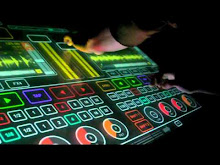
Napster was an online music file sharing service created by Shawn Fanning while he was attending Northeastern University in Boston and operating between June 1999 and July 2001. Its technology allowed people to easily copy and distribute MP3 files among each other, bypassing the established market for such songs and thus leading to the music industry's accusations of massive copyright violations. Although the original service was shut down by court order, it paved the way for decentralized peer-to-peer file-distribution programs, which have been much harder to control. The service was named Napster after Fanning's hairstyle-based nickname.
Background:
Shawn Fanning and Sean Parker first released the original Napster in June of 1999. Fanning wanted an easier method of finding music than by searching IRC or Lycos. John Fanning of Hull, Massachusetts, Shawn's uncle, ran all aspects of the company's operations for a period from their office on Nantasket Beach. The final agreement gave Shawn 30% control of the company, with the rest going to his uncle. It was the first of the massively popular peer-to-peer file distribution systems, although it was not fully peer-to-peer since it used central servers to maintain lists of connected systems and the files they provided, while actual transactions were conducted directly between machines. Although there were already networks that facilitated the distribution of files across the Internet, such as IRC, Hotline, and USENET, Napster specialized exclusively in music in the form of MP3 files and presented a friendly user interface. The result was a system whose popularity generated an enormous selection of music to download.
Although the recording industry denounced music "sharing" as equivalent to theft, many Napster users felt justified in using the service for a number of reasons. Many believed that the quality of new albums had decreased by the late 1990s, with the typical bestselling album containing only one or two good songs bundled with many low-quality "filler" songs. At the same time, the cost of the CD format had decreased immensely, but the price of CD albums had stayed constant. People praised Napster because it enabled them to freely obtain hit songs without having to buy an entire album. Napster also made it relatively easy for music enthusiasts to download copies of songs that were otherwise difficult to obtain, like older songs, unreleased recordings, and songs from concert bootleg recordings. Some users felt justified in downloading digital copies of recordings they had already purchased in other formats, like LP and cassette tape, before the compact disc emerged as the dominant format for music recordings.
Irrespective of these justifications, many other users simply enjoyed trading and downloading music for free. With the files obtained through Napster, people frequently made their own compilation albums on recordable CDs, without paying any royalties to the artist/composer or the estate of the artist/composer. High-speed networks in college dormitories became overloaded, with as much as 80% of external network traffic consisting of MP3 file transfers. Many colleges blocked its use for this reason, even before concerns about liability for facilitating copyright violations on campus.
The service and software program were initially Windows-only, but in 2000 Black Hole Media wrote a Macintosh client called Macster. Macster was later bought by Napster and designated the official Mac Napster client, at which point the Macster name was discontinued. Even before the acquisition of Macster, the Macintosh community had a variety of independently developed 3rd party Napster clients. Most notably was the open source client called MacStar, released by Squirrel Software in early 2000. The release of MacStar's source code paved the way for 3rd party Napster clients across all computing platforms, of which gave users advertisement-free music sharing options.


No comments:
Post a Comment